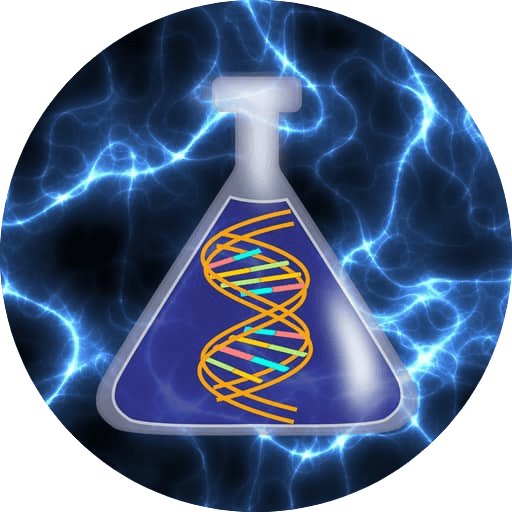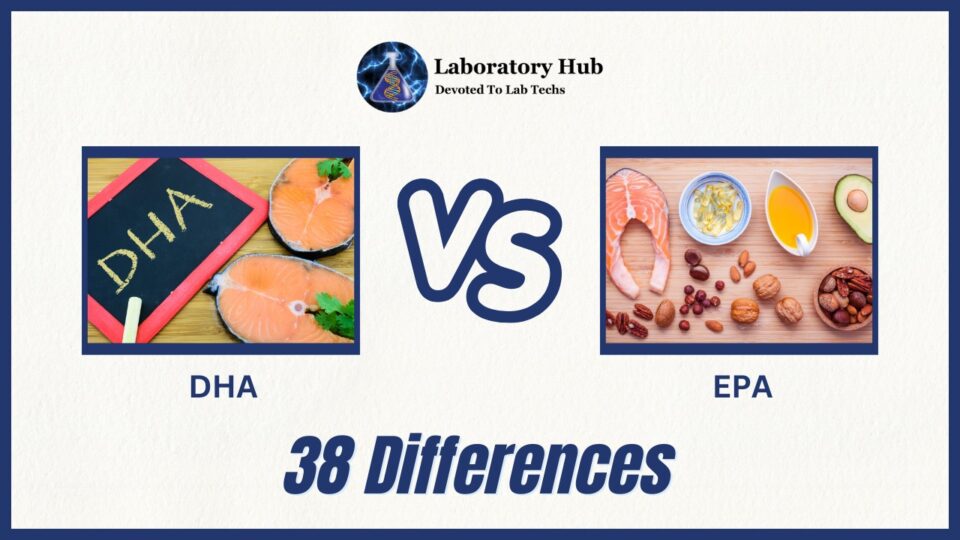Docosahexaenoic acid (DHA) and eicosapentaenoic acid (EPA) are two forms of omega-3 fatty acids that are essential polyunsaturated fatty acids in the body. They are found predominantly in specific types of fish, algae, and fish oil supplements.
DHA (Docosahexaenoic acid)
Docosahexaenoic acid, abbreviated DHA, is a kind of omega-3 fatty acid. It is a polyunsaturated fatty acid with a long chain that is essential for the formation and function of cell membranes, notably those in the brain, retina, and other nerve tissues.DHA is naturally found in fatty fish (such as salmon, mackerel, and tuna) and in smaller levels in algae. It is also available as nutritional supplements, which are frequently made from fish oil or algae oil.
DHA is an important structural component of brain tissue, accounting for a sizable fraction of brain cell membranes. It is critical for normal brain growth and function, particularly throughout foetal development and early infancy. It has been linked to better cognitive function, learning, and memory.
It is extremely concentrated in the retina of the eye. It is critical for keeping optimum vision and avoiding age-related macular degeneration and other eye problems. It is found in nerve cell membranes and aids in the transmission of nerve signals. It is thought to help with overall nervous system function and nerve cell communication.
EPA (Eicosapentaenoic acid)
Eicosapentaenoic acid (EPA) is a form of omega-3 fatty acid found in fatty fish such as salmon, mackerel, and sardines, as well as some algae. It is one among the essential fatty acids that the human body needs to function properly but cannot create on its own and must be received through diet or supplements.EPA is well-known for its numerous health advantages, especially its beneficial impact on cardiovascular health and inflammation.
EPA has been proven to have cardiovascular advantages such as reducing inflammation, lowering triglyceride levels, and improving overall lipid profiles.It can also help lower the risk of heart disease by encouraging healthy blood vessel activity and decreasing the possibility of blood clot formation.It has anti-inflammatory characteristics that can help modify the immunological response in the body.
Chronic inflammation is linked to a variety of chronic diseases, and EPA’s capacity to lower inflammation may benefit general health.It has been investigated for its potential role in improving mood and mental health. According to some research, a higher EPA intake may be connected with a reduction in symptoms of depression and anxiety.
Also Read: Cytokines vs Chemokines- 15 Major Differences
|
S.No. |
Aspect |
DHA |
EPA |
|
1 |
Full Name |
Docosahexaenoic Acid |
Eicosapentaenoic Acid |
|
2 |
Type of Omega-3 Fatty Acid |
Long-chain omega-3 fatty acid |
Long-chain omega-3 fatty acid |
|
3 |
Chemical Structure |
Contains 22 carbon atoms and 6 double bonds |
Contains 20 carbon atoms and 5 double bonds |
|
4 |
Primary Food Source |
Often found in fatty fish and seafood |
Found in fatty fish and algae-based supplements |
|
5 |
Health Benefits |
Supports brain health and cognitive function |
Supports cardiovascular health and inflammation |
|
6 |
Brain Development |
Crucial for brain development in infants |
Less directly linked to brain development |
|
7 |
Eye Health |
Essential for vision development and retinal health |
May have a role in eye health |
|
8 |
Heart Health |
Supports overall heart health |
Supports cardiovascular health and function |
|
9 |
Triglyceride Levels |
Can help reduce triglyceride levels |
Can help reduce triglyceride levels |
|
10 |
Blood Pressure Regulation |
May help regulate blood pressure |
Can have a positive impact on blood pressure |
|
11 |
Anti-Inflammatory Properties |
Can have anti-inflammatory effects |
Can have anti-inflammatory effects |
|
12 |
Cell Membrane Component |
A major component of cell membranes |
Present in cell membranes |
|
13 |
Structural Role in Body |
Contributes to brain, eye, and nervous system structure |
Important for cell membrane structure |
|
14 |
Cognitive Function |
Supports cognitive function and memory |
May have a role in cognitive health |
|
15 |
Mood Regulation |
Can contribute to mood regulation |
Can influence mood and mental well-being |
|
16 |
Autoimmune Conditions |
May have a protective effect in autoimmune conditions |
May help manage symptoms of autoimmune diseases |
|
17 |
Atherosclerosis Prevention |
May help prevent atherosclerosis |
Can contribute to reduced risk of atherosclerosis |
|
18 |
Antiarrhythmic Properties |
May have antiarrhythmic effects |
Can have antiarrhythmic effects |
|
19 |
Gene Expression Regulation |
May regulate gene expression related to inflammation |
May regulate gene expression linked to inflammation |
|
20 |
Inflammation Modulation |
Can modulate inflammatory responses |
Can modulate inflammatory responses |
|
21 |
Cancer Prevention |
Some studies suggest potential cancer prevention benefits |
Some studies suggest potential cancer prevention benefits |
|
22 |
Plaque Stabilisation |
Can help stabilise arterial plaques |
Can contribute to arterial plaque stabilisation |
|
23 |
Anti-Thrombotic Properties |
May have anti-thrombotic effects |
Can have anti-thrombotic effects |
|
24 |
Neurological Health |
Supports neurological health and function |
May have a role in neurological health |
|
25 |
Alzheimer’s Disease |
May play a role in reducing Alzheimer’s disease risk |
May have a role in reducing Alzheimer’s disease risk |
|
26 |
Dietary Sources |
Found in fish such as salmon, mackerel, and sardines |
Present in fatty fish and fish oil supplements |
|
27 |
Maternal Health |
Important for maternal and fetal health |
Less directly linked to maternal health |
|
28 |
Cellular Signalling |
May impact cellular signalling pathways |
Can influence cellular signalling pathways |
|
29 |
Eicosanoid Production |
Can lead to production of anti-inflammatory eicosanoids |
Can lead to production of anti-inflammatory eicosanoids |
|
30 |
Skin Health |
Can contribute to healthy skin |
May play a role in maintaining skin health |
|
31 |
Asthma and Allergies |
May reduce symptoms of asthma and allergies |
May reduce symptoms of asthma and allergies |
|
32 |
Anti-Aging Benefits |
May have anti-aging effects |
May have anti-aging effects |
|
33 |
Consumption Recommendations |
Recommended intake varies by age and health status |
Recommended intake varies by health status |
|
34 |
Heart Arrhythmias |
May help reduce the risk of certain arrhythmias |
May help reduce the risk of certain arrhythmias |
|
35 |
DHA to EPA Ratio |
Higher DHA to EPA ratio may be beneficial |
Balance of DHA and EPA can vary based on health goals |
|
36 |
Infant Development |
Vital for brain and nervous system development in infants |
Less directly involved in infant development |
|
37 |
Cellular Function |
Plays a role in various cellular functions |
Important for cellular function |
|
38 |
Supplements |
Available as a supplement in various forms |
Available as a supplement in various forms |
Also Read: Humoral vs Cell-mediated Immunity- 27 Differences
Frequently Asked Questions (FAQS)
What are DHA and EPA dietary sources?
DHA and EPA are abundant in fatty fish such as salmon, mackerel, sardines, and trout. Fish oil supplements, algae-based supplements, and fortified foods are among more options. Plant-based sources, such as flaxseeds and walnuts, contain ALA (alpha-linolenic acid), which can be converted to modest levels of DHA and EPA in the body.
What are DHA and EPA's health benefits?
DHA and EPA have been linked to a variety of health advantages. They promote heart health by lowering triglyceride levels, blood pressure, and the risk of arrhythmias. They are also important for brain health and development, boosting cognitive function and lowering the risk of neurodegenerative illnesses. DHA and EPA also have anti-inflammatory characteristics, which may help with illnesses like arthritis and other inflammatory disorders.
What are the benefits of DHA and EPA on brain health?
DHA is an important structural component of brain tissue that is required for brain development and function throughout life. The EPA is in favor of mood management and may play a role in lowering the risk of sadness and anxiety. These fatty acids aid in the maintenance of cell membrane integrity, the communication of brain cells, and the proliferation of neurons.
Should I supplement with DHA and EPA?
If you don’t eat fatty fish on a daily basis, you might consider taking fish oil pills to get enough DHA and EPA. However, before beginning any new supplement regimen, it is best to consult with a healthcare expert. Algae-based supplements may be an option for plant-based people or those with dietary limitations.
Can DHA and EPA aid with heart health?
Yes, DHA and EPA can aid in the improvement of cardiovascular health. They have been proven to lower blood pressure, improve blood vessel function, and lower lipid levels. These effects help to minimise the risk of heart disease and its complications.
User Review
( votes)
Laboratory Hub aims to provide the Medical Laboratory Protocols & General Medical Information in the most easy to understand language so that the Laboratory Technologist can learn and perform various laboratory tests with ease. If you want any protocol to be published on Laboratory Hub, Please drop a mail at contact@laboratoryhub.com. Happy Learning!

